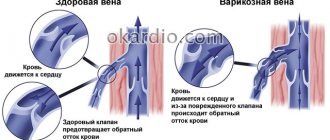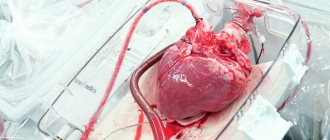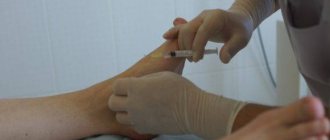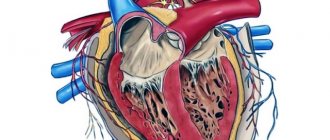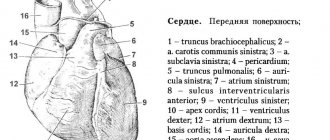Despite the wide variety of methods used to treat varicose veins (and its complications), conservative therapy does not lead to a radical solution to the medical problem. Constant use of compression garments and taking medications stop the development of the pathology, but do not in any way affect the mechanism of its action.
Surgical operations, like therapeutic courses, do not eliminate the causes of the disease, but, at the same time, only surgical intervention makes it possible to restore physiologically normal blood circulation for a long period of time, and prevent extremely life-threatening phenomena to the patient, which lead to ascending thrombophlebitis.
Operations on the veins of the lower extremities
The difficulty of treating varicose veins lies in the lack of accurate data on the factors that provoke the disease. Phlebitis, thrombosis and thrombophlebitis, which are a complication of venous dysfunction and inflammatory processes in blood vessels, have become widespread throughout the world, regardless of climatic and social living conditions. Treatment of these pathologies is based on two principles: maintaining the blood in a stable liquid state and preventing deformation of the veins.
If the effectiveness of supportive and drug therapy is not sufficient to maintain a normal quality of life, phlebectomy is performed routinely (phlebectomy - removal of veins affected by varicose veins). As for the Troyanov-Trendelenburg operation (crossectomy), this type of surgery is performed for urgent indications, and is also one of the stages of combined phlebectomy.
Preparatory stage
To properly prepare for leg vein surgery, you must undergo a medical examination. This will identify existing problems and possible contraindications.
Before crossectomy, the following laboratory tests are prescribed:
- Blood and urine analysis;
- ECG;
- Coagulogram;
- Ultrasound of superficial and deep vessels of the legs.
Even before surgery, the doctor must understand exactly where the thrombosis is localized, how severely the vessel has been affected by varicose veins, and whether there is an inflammatory process.
Stage of preparation for leg surgery
The patient must prepare himself mentally. It is important to understand what kind of operation this is, why it is being performed, and discuss any unclear questions with your doctor. You should inform your doctor in advance about all medications you are taking. Some of them should be stopped before surgery.
On a note!
Blood thinners such as Warfarin and Aspirin most often need to be stopped for a certain time before surgery. This will prevent possible complications.
Also, preparation for the operation will include the following steps:
- Morning shower or bath on the day of crossectomy;
- Refusal to shave your legs for several days at the intervention sites in order to prevent infectious and inflammatory processes;
- Refusal to eat and drink for 6-8 hours, provided the operation is performed under general anesthesia.
Proper preparation is very important. It allows you to avoid many complications during surgery.
Operation Troyanov-Trendelenburg
Crossectomy (Troyanov-Trendelenburg operation) is an emergency vascular operation, the purpose of which is to prevent the penetration of a blood clot into the deep femoral veins, or to prevent the detachment of a blood clot with the subsequent development of pulmonary embolism.
During the operation, the great saphenous vein is crossed at a distance of 0.7-1 cm from the site of its connection with the femoral vein. At the same time, the estuarine tributaries of the vein are ligated. The result is that the blood circulating in the superficial veins does not enter the deep highway in the area of the oval window, and the reverse flow through the saphenofemoral ostium also stops.
Our clinics in St. Petersburg
Medical center on Pionerskaya Polikarpov Alley 6k2 Primorsky district
- Pionerskaya
- Specific
- Commandant's
Medical center South-West Marshal Zhukov Ave. 28k2 Kirovsky district
- Avtovo
- Avenue of Veterans
- Leninsky Prospekt
Medical center in Devyatkino Okhtinskaya alley 18 Vsevolozhsk district
- Devyatkino
- Civil Prospect
- Academic
For detailed information and to make an appointment, you can call +7
Make an appointment
Promotion “Sclerotherapy” Sclerotherapy of the veins of the lower extremities
3500 a until 07/31/2020 There are contraindications. Specialist consultation is required.Promotion “Health and beauty of your legs” Duplex scanning of the veins of the lower extremities + consultation with a phlebologist
1590 a until 07/31/2020 There are contraindications. Specialist consultation is required.
Indications and contraindications for surgery
Indications for crossectomy are the following pathologies:
Ascending acute thrombophlebitis (area - knee joint and upper third of the thigh);
- Purulent thrombophlebitis;
- Drug-induced thrombophlebitis.
The symptoms of these diseases are similar to each other. Severe pain appears in the lower limb, the intensity of which gradually increases. The leg becomes purple-blue, swells, and the general condition worsens. If the outcome is favorable, after a few days the swelling subsides, and the outflow of blood resumes through the network of collateral veins.
If the process develops negatively, the detached thrombus ascends with the ascending blood flow and enters the pulmonary artery. Blockage of the lumen of the vessel causes instant death. Another serious complication of acute thrombophlebitis is tissue necrosis with subsequent development of gangrene. In this case, the question of amputation of the limb is raised. Crossectomy is an emergency operation performed to prevent life-threatening complications.
Contraindications to crossectomy are acute infections (bacterial, viral) occurring with high temperature and febrile state, heart and kidney failure, diseases of the hematopoietic organs, uncontrolled diabetes mellitus, obliterating atherosclerosis. The operation is postponed if there are infectious skin lesions in the groin area and the surgical access area.
Contraindications
Contraindications can be both absolute and relative:
The following are considered absolute contraindications:
- oncological diseases;
- diabetic nephropathy, signs of diabetic foot;
- severe obesity;
- multiple organ failure;
- severe atherosclerosis;
- cachexia;
- elderly and senile age.
Relative contraindications (that is, those in which the possible benefit should outweigh the risk) include:
- trophic disorders on the operated leg;
- state of limited mobility in the postoperative period;
- inability to provide round-the-clock compression in the postoperative period.
Technique of the operation
To perform the Troyanov-Trendelenburg operation, three surgical approaches are used: inguinal, supra-inguinal (according to Brupper), Chervyakov’s oblique longitudinal approach. When performing operations on the femoral vein, a vertical incision in the projection of the vascular bundle is most often used.
result of crossectomy
After tissue dissection, the proximal portion of the great saphenous vein is isolated. The femoral vein is clearly visible through the lumen of the fascia. Ligation of venous lines is carried out only after precise determination of the location of the sapheno-femoral anastomosis. To do this, a section of the femoral and saphenous vein is isolated at the junction. Having processed the estuarine tributaries, the surgeon crosses the trunk of the saphenous vein with clamps.
Ligation is carried out at the site of its confluence with the femoral vein. The Troyanov-Trendelenburg operation is effective in cases where thrombosis has not spread beyond the great saphenous vein. In case of superficial thrombophlebitis, surgical intervention is carried out no later than two days after the detection of a blood clot.
Postoperative period and complications
After the operation, the patient remains in the hospital for about a week, at the end of which the stitches are removed. For a month, he will have to constantly wear compression garments, which must be of good quality and accurately sized.
Conservative therapy involves the prescription of anti-inflammatory drugs and phlebotropic agents that improve blood circulation and accelerate the patient’s recovery.
In case of pathology of the veins of the extremities, physical activity and early activation of the patient play an important role, preventing thrombus formation and aimed at restoring microcirculation. Walking and special exercises are useful, but you should avoid prolonged sitting or standing, which increases venous stagnation.
Complications from crossectomy are relatively rare, but still possible. Their most likely cause lies in the traumatic nature of the intervention itself, as well as in violation of the surgical technique. Complications include:
- Hemorrhages in the intervention area;
- Bleeding;
- Suppuration of a postoperative wound;
- Impaired lymph circulation with lymph leakage and cyst formation (lymphocele);
- Reduced and changed sensitivity of the skin (if nerve endings are damaged).
Most of these changes go away on their own, but some (suppuration, bleeding) may require additional operations. Severe consequences in the form of deep thrombosis and progressive thrombophlebitis are, fortunately, extremely rare.
If emergency phlebectomy is necessary, the modified Troyanov-Trendelenburg operation is the only possible method of treatment, which has no alternative, and its disadvantage is the need for hospitalization and constant monitoring of the patient.
It is important to remember that in case of any damage to the blood vessels of the legs, you should contact a surgeon in a timely manner, when it is possible to avoid traumatic emergency operations and manage with minimally invasive outpatient procedures. If there is no way out, and the disease threatens health and life, then you need to immediately go to specialists.
Crossectomy as part of combined operations
When a combined phlebectomy is planned, the first step is crossectomy. The surgeon makes an inguinal incision at the junction of the superficial varicose vein and the deep vein. The superficial vessel is cut off and ligated.
The next step is a second incision created at the top of the leg or ankle. The saphenous vein is identified and a metal probe is inserted and advanced to the site of the first incision. After reaching the first surgical access mark, the veins are fixed with a special thread on the probe tip.
The third stage is called stripping, or Babcock's operation. The tip of the flexible probe is pulled through the incision, while the sharp lower edge of the instrument cuts off the vein from the surrounding tissue.
Miniphlebectomy (Narat method) is a stage of the operation at which pre-marked venous nodes and tributaries are removed and the perforating veins are ligated. If the veins have a tortuous shape, the surgeon makes several incisions, removing the vessels in parts. The nodules are removed with a special surgical instrument (Muller hook) through miniature punctures (2 mm, no more), which subsequently heal on their own, without suturing.
What result to expect
The outcome of the operation largely depends on the indications for which it was performed. If the main task of doctors is to prevent the development of deep vein thrombosis, in this case the effectiveness of the procedure is quite high.
As for the treatment of varicose veins, crossectomy for such lesions is not the most successful solution, since in 30% of patients over the next 4 years there is a relapse of the disease and the need for re-operation.
Like any other surgical procedure, crossectomy has its advantages and disadvantages . If the patient suffers only from varicose veins and the risk of developing thrombosis is minimal, it would be wiser to opt for another treatment method, such as phlebectomy. But in any case, only the surgeon should decide on the choice of method and the appropriateness of the procedure.
Types of vein surgery
Venectomy, although it is not an operation after which the patient is bedridden for a long time (on the contrary, high physical activity is required), but, nevertheless, most patients agree to surgical intervention only if there are unconditional grounds. Phlebologists, in turn, strive, whenever possible, to use minimally invasive surgical methods that are not associated with significant blood loss and are not accompanied by postoperative pain syndrome.
Preliminary studies carried out using angioscanning allow one to obtain a reliable picture of the state of the venous bed, the valve apparatus of the superficial and deep veins. If areas of collection of venous blood from the deep bed into the superficial system are detected, a planned operation is prescribed, carried out under the control of an ultrasound machine.
The use of low-traumatic surgery is possible only in the early stages of varicose veins, when the result is well predicted and, moreover, a good cosmetic effect is achieved. In the future, there will be constant monitoring by a phlebologist, which is necessary to prevent the formation of thrombophlebitis.
In the case of the development of postthrombophlebitis syndrome, accompanied by insufficiency of the venous valves, the Cockett operation or the Linton operation is indicated, the essence of which is to ligate the perforating veins in the lower leg area (using the Cockett technique, ligation is performed above the fascia, using the Linton technique - under the fascia).
A classic surgical technique in phlebology is the Keller operation, the essence of which is to remove a varicose vein under anesthesia. The disadvantage of this technique is the high probability of relapses in the completed period (within 5 years, 50% of patients experience recurrent varicose veins).
What is the advantage of this method
Very often, patients are interested in why this type of surgical intervention has changed its name. Due to the fact that earlier during the operation the large vein was crossed below the femoral ostium, relapses often occurred.
To reduce the risk of this, doctors slightly changed the technique and began to perform the ligation a little higher, which made it possible to separate the superficial and deep blood flow. This surgical technique is more effective and significantly reduces the risk of disease progression.
Rehabilitation period
After crossectomy, the patient quickly returns to normal physical condition. The operation itself lasts about an hour and a half (working with veins requires pinpoint precision, since each puncture is accompanied by heavy bleeding), and is performed under local anesthesia. Conservative therapy is prescribed on the second day, and on the same day the patient is allowed to get up. The doctor selects the type of compression products (stockings, bandages, knee socks) with the required degree of compression. Medical knitwear is used for at least two months after surgery. A necessary condition for recovery is physical activity - long walks, performing a set of exercises that improve blood circulation. The rehabilitation program is drawn up by the attending physician.
Crossectomy: rehabilitation
In order to speed up the rehabilitation process after crossectomy, patients should adhere to the following recommendations:
- maintain motor mode;
- to refuse from bad habits;
- wear compression stockings.
After surgery, a patient who has undergone a crossectomy must be examined annually by a phlebologist and undergo an ultrasound examination.
Crossectomy, or otherwise “Troyanov-Trendelenburg venectomy,” performed in isolation, is an emergency operation, since during its implementation the perforating veins and saphenous vein are not removed. The patient and his relatives must be prepared that the scope of surgical intervention can be significantly expanded.
An alternative to planned crossectomy is miniphlebectomy, however, the use of this method is contraindicated in cases of thrombosis and the risk of developing thrombophlebitis. Miniphlebectomy is preferable when only small veins are affected. In the presence of an active inflammatory process, the feasibility of this intervention is determined by the angiosurgeon at the Yusupov Hospital. In addition, the therapy clinic uses more modern and high-tech techniques: endovasal laser obliteration, radiofrequency ablation, etc.
Author
Maxim Sergeevich Kapranov
Surgeon, specialist in X-ray endovascular diagnostic and treatment methods
Video: phlebectomy - removal of varicose veins (operation)
Materials: https://operaciya.info/serdce-sosudy/krossektomiya-troyanova-trendelenburga/
+ — Read more ≫ Click to collapse
Varicose veins are a condition that causes the veins under the skin to swell. To prevent varicose veins, it is necessary to lead an active lifestyle, since this disease appears as a result of stagnation of blood in the extremities.
First of all, representatives of professions where you constantly need to stand on your feet or work all day in a sitting position are at risk. Other causes of varicose veins include obesity, high blood pressure and heredity.
If it was not possible to prevent the development of the disease, then surgical intervention is required in most cases to treat veins in the later stages of development of varicose veins. The Troyanov-Trendelenburg operation is one such method.
The Troyanov-Trendelenburg (TT) operation has been used to treat varicose veins since the end of the 19th century. The first such operation was performed in 1887. The author of this technique is the Russian surgeon Troyanov, who worked as the head of the department of the Obukhov men's hospital in St. Petersburg.
A little later (in 1890), his German colleague Trendelenburg began to use it. The first mention of the method in medical literature dates back to the same year.
Consequently, vein surgery (nowadays called crossectomy) was named after these two surgeons. Dieterich later made a great contribution to the development of this method of treating veins, but the name of the operation remained unchanged. The essence of the intervention is to create an incision through which the large saphenous vein is removed.
It is necessary to undergo an examination by a surgeon to make sure that after treating the veins using this method, the patient will not experience complications. The main disadvantage of the method is the large scar that remains on the thigh after the operation.
Crossectomy according to Troyanov Trendelenburg is performed in the following cases:
- acute thrombophlebitis of the great saphenous vein (GSV);
- development of thromboembolism;
- lymph stagnation;
- lymphovenous insufficiency;
- valvular insufficiency of the GSV.
Contraindications to crossectomy include viral and bacterial infections that provoke an increase in body temperature, cause a febrile state of the whole body, lead to diseases of the kidneys and hematopoietic organs, and increased blood sugar levels.
In addition, the operation is prohibited if there are infectious lesions of the skin in the surgical access area.
The required minimum examinations for intervention include:
- testing for HIV infection, as well as viral hepatitis B and C;
- carrying out a coagulogram;
- conducting a blood test;
- examination by a general practitioner.
- duplex scanning of veins using ultrasound, which helps determine the location of the blood clot.
Before the operation itself, you need to shave your legs and purchase special compression garments. The choice of the latter must be approached with the utmost seriousness, because it must be the right size and good quality.
If it is not possible to buy such underwear, then before crossectomy the legs are wrapped with elastic bandages.
Before performing a crossectomy, the patient decides which type of anesthesia to choose: general or local. Many circumstances may influence his decision, however, in most cases, it is the patient who has the last word. Below are the main stages of the Trendelenburg operation:
- the surgeon treats the surgical field;
- makes an incision in the skin near the groin;
- highlights the anastomosis with the GSV;
- ties the GSV.
When performing TT crossectomy, three surgical approaches are used: inguinal, oblique and supra-inguinal. When the operation takes place on the femoral vein, a vertical incision is made extremely methodically and carefully along the projection of the vascular bundle.
After the tissue has been dissected, the surgeon identifies a section of the great saphenous vein. To determine the location of the anastomosis, he isolates part of the saphenous and femoral veins at the junction.
After treating the estuarine tributaries, the doctor crosses the saphenous vein with clamps. Ligation of the vein is performed at the place where it prolapses into the femoral vein.
Next, stitches must be placed at the incision site. The disadvantage of this method of treating thrombosis is the large scar that forms on the body after the operation. After this, a loincloth must be applied to the wound, which the doctor will periodically remove during further examinations.
It is important to apply the bandage as tightly as possible, especially when it comes to the initial stages of rehabilitation. The patient should start walking immediately after leaving the room in order to activate the natural processes in the body.
It is advisable to resort to the Troyanov-Trendelenburg operation only when superficial thrombophlebitis has not yet developed. If the latter is detected, surgical intervention is urgently required, which should be carried out no later than two days from the moment of diagnosis of the disease.
Venectomy according to Troyanov Trendelenburg - technique and course of intervention:
The patient will have to undergo a week-long rehabilitation course directly in the hospital. If the patient's condition is okay, the doctor will remove the stitches.
Compression garments or elastic bandages will need to be worn for a month. This is followed by a period of conservative therapy, which includes taking drugs that improve blood circulation, as well as anti-inflammatory drugs. All this will contribute to the patient’s rapid recovery after surgery.
Due attention should also be paid to physical activity. As mentioned above, early activation of natural processes in the body will prevent further formation of blood clots, and will also restore normal blood circulation in the body.
It is useful to walk more in the fresh air and spend less time sitting or standing, because... this will increase venous stagnation.
Complications from surgery are rare, but they can happen. Among them are:
- On the first day, slight bleeding from the wounds is possible.
- Suppuration of the wound. This complication occurs quite rarely, and only when antiseptic standards are not followed.
- Problems with the circulation of lymph through the vessels. Possible due to damage to blood vessels.
- Changes in skin sensitivity. It is the result of disturbances in the functioning of the central nervous system. Unpleasant abnormal sensations are also possible.
- Thrombosis and embolism. This complication is quite rare.
As a rule, disruption of the nervous system or large veins is caused by the surgeon’s lack of professionalism.
Postoperative rehabilitation usually proceeds fairly quickly and is not accompanied by any pain.
The patient is not limited in movement, because, on the contrary, this is encouraged by doctors. The main thing is to stick to the regime and wear a special compression bandage, which will support and promote rapid recovery of the damaged area.
After one month, compression garments can be removed only at night, and during the day it is recommended to continue wearing them for at least another month. You can completely refuse compression stockings or bandages only after your doctor’s permission.
To prevent varicose veins, it is recommended to spend a lot of time swimming in the pool, as this helps normalize blood circulation in the lower extremities. You can get by with a little exercise in the morning.
It is also quite important to wear only comfortable shoes, especially if some signs of varicose veins have already begun to appear. High heeled shoes are strictly prohibited.
Troyanov Trendelenburg
operation - surgical. Treatment is traditional.
Preparing for surgery
and the progress of the procedure.
Postoperative period. . Troyanov Trendelenburg
operation - surgical.
Troyanov test results
—
Trendelenburg
is assessed using the Bernstein method, created in 1927.
Treatment is traditional.
Troyanov Trendelenburg
operation - surgical.
The medical name of the intervention is
Troyanov
-
Trendelenburg
operation .
You may also be interested
Leave a comment X
Sections
Complications of surgical treatment
Among the main ones:
- Bleeding. In the first 24 hours after the procedure, there is a possibility of slight bleeding from the wounds.
- Bruising and hematomas. The skin and subcutaneous layer become saturated with blood or blood accumulates in the cavities, which is a logical complication of crossectomy.
- Inflammatory processes: inflammatory processes and suppuration. Suppuration of a surgical wound is very rare and is provoked by serious violations of antiseptic standards during the intervention.
- Lymphorrhea (leakage of lymph through surgical wounds) and lymphocelle (the appearance of a cavity filled with lymph at the site of surgery) are the result of damage to lymph vessels and nodes due to harsh handling of tissues.
- Dulling of skin sensitivity : a decrease in the threshold of sensitivity along the inside of the lower leg and foot or the occurrence of unpleasant sensations like goosebumps, which is associated with a violation of innervation.
- Thrombosis and embolism. Blockage of the deep veins of the leg during crossectomy is very rare. Violation of the functions of large veins and nerves is very rare and is associated with a lack of experience on the part of the surgeon.
